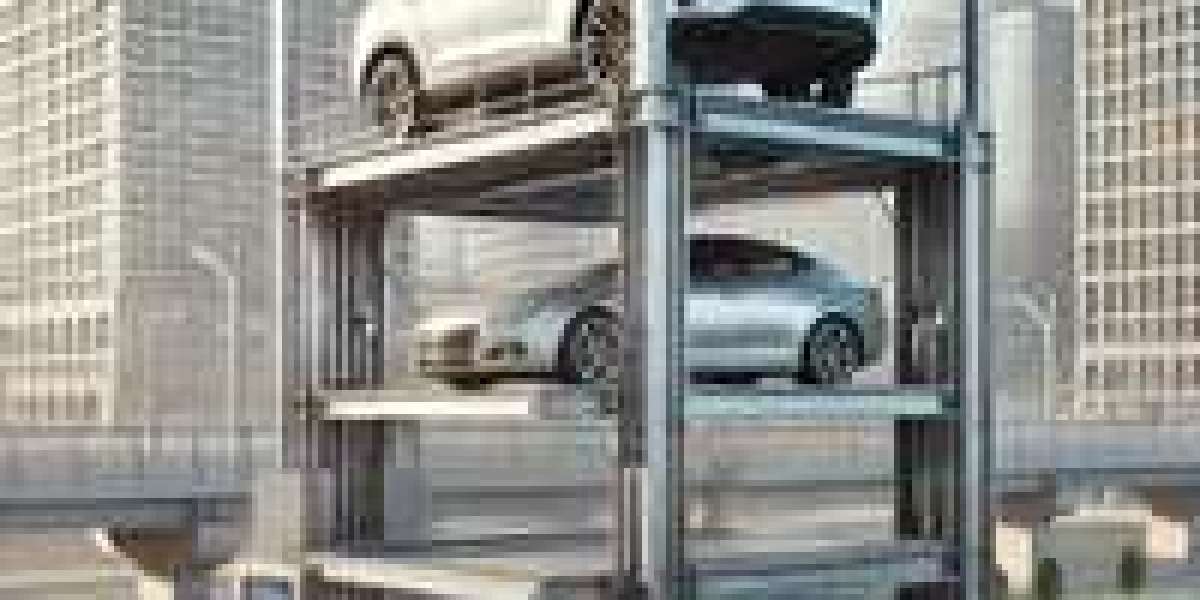In the age of rapid urbanization and booming vehicle ownership, cities are facing an ever-growing crisis lack of parking space. With roads choked by traffic and residential and commercial areas overflowing with vehicles, traditional parking methods have become outdated. The answer? Stack Parking Systems a smart, vertical solution that maximizes parking capacity using minimal ground space.
Whether in high-rise apartments, office towers, or shopping malls, stack parking systems are changing how we think about space and convenience.
What Are Stack Parking Systems?
Stack Parking Systems are mechanical or automated structures that allow multiple vehicles to be parked one above the other, vertically. Instead of spreading cars across large parking lots or basement areas, these systems stack vehicles in tiers, using hydraulic lifts or automated machinery.
Depending on the complexity, they can be:
- Mechanical (manual or semi-automatic)
- Fully automated using software and sensors
They are ideal for:
- Compact plots in cities
- Residential and commercial complexes
- Public parking facilities
Why Stack Parking Systems Are the Future
Rapid Increase in Vehicles
With millions of new vehicles registered every year in cities like Mumbai, Delhi, and Bengaluru, traditional parking systems can no longer keep up.
Limited Land Availability
Urban land is expensive and scarce. Stack parking maximizes vertical space, not horizontal area.
Smart and Sustainable Cities
Stack parking systems align with India’s Smart City Mission and global green infrastructure goals.
Types of Stack Parking Systems
- Two-Post Stackers
Basic vertical parking for two cars. Ideal for small offices or homes. - Multi-Level Puzzle Parking
Cars are moved both horizontally and vertically. Popular in commercial zones. - Rotary Parking Systems
Like a Ferris wheel for cars, rotating to bring the car to ground level. - Automated Tower Parking
High-rise, robot-controlled systems that store dozens of cars in minimal space.
Advantages of Stack Parking Systems
- Save up to 80 percent space compared to conventional parking
- Reduce land cost and increase parking capacity
- Minimize traffic congestion by keeping roads clear of parked vehicles
- Enhance safety parked cars are secure from theft or damage
- Integrate smart technology app-based parking, RFID access, and real-time tracking
- Support eco-friendly goals by reducing idling and fuel waste
Applications of Stack Parking Systems
- Residential Complexes: Ideal for gated communities looking to increase parking without expanding basements or open areas
- Office Buildings and IT Parks: Help accommodate employees and visitors in compact urban plots
- Shopping Malls and Multiplexes: Support large volumes of daily visitors with efficient parking
- Hospitals and Educational Institutes: Improve accessibility in high-traffic institutions
- Public Parking Zones: Deployed by municipalities to manage parking in congested city areas
Stack Parking in India’s Smart Cities
Major cities such as Mumbai, Delhi NCR, Pune, Bengaluru, and Hyderabad are incorporating stack parking systems into their urban planning models. These systems support:
- Automated parking towers
- App-based parking slot reservations
- Real-time vehicle management
- Reduced surface congestion
- Improved infrastructure efficiency
Considerations Before Installing Stack Parking
- Assess the available plot size and parking needs
- Determine the load-bearing capacity of the system
- Plan for electricity and backup power
- Consider the ease of access and frequency of use
- Choose a reliable vendor offering long-term support
- Ensure compliance with local municipal and fire safety regulations
The Future is Vertical
As urban living becomes denser and more complex, stack parking systems offer a clear path forward. Their scalability, integration with digital tools, and space efficiency make them the preferred choice for cities and developers looking to future-proof their projects.
Stack Parking Systems are reshaping how we approach urban mobility and infrastructure. With benefits ranging from space optimization to smart integration and environmental support, they are more than just a parking solution they are a cornerstone of modern urban design.
Whether you are a developer, municipal planner, or housing society member, investing in stack parking systems is a step toward smarter, safer, and more sustainable cities.


